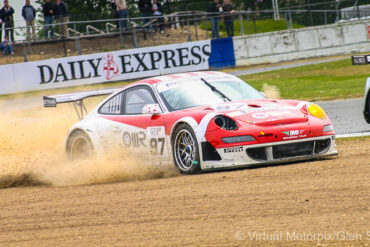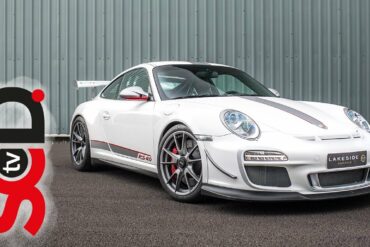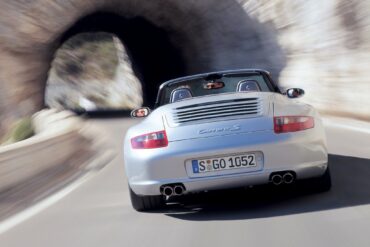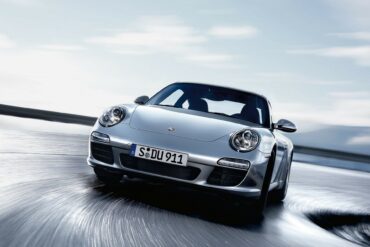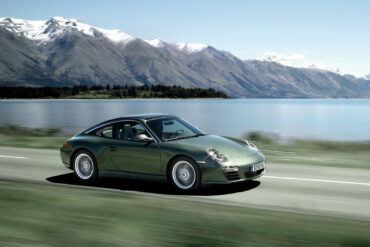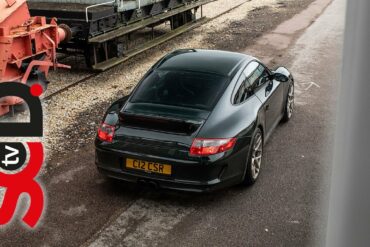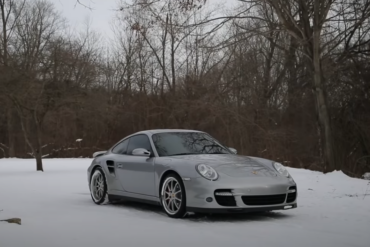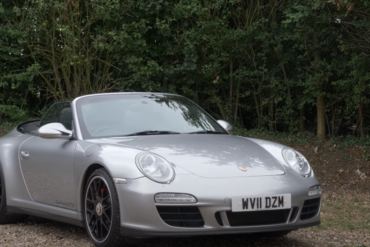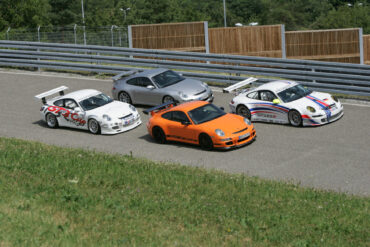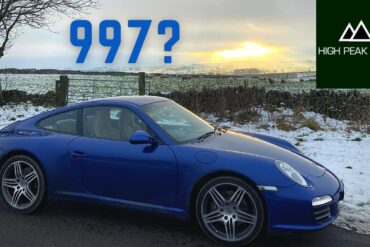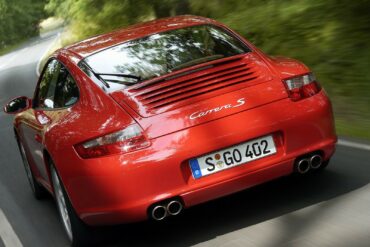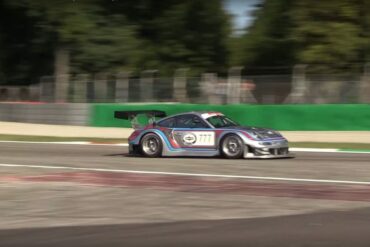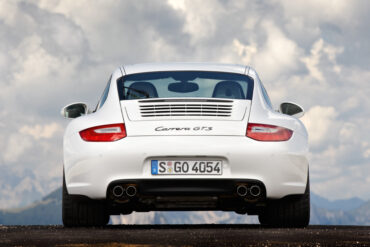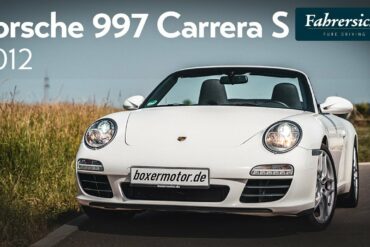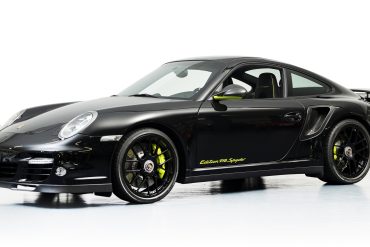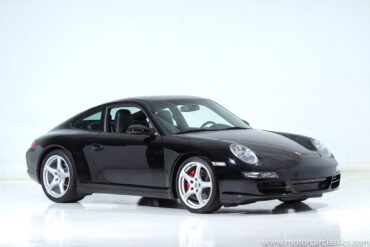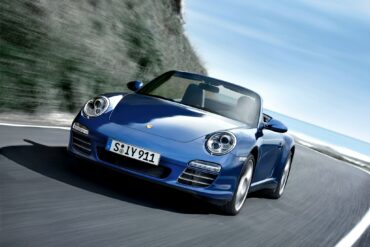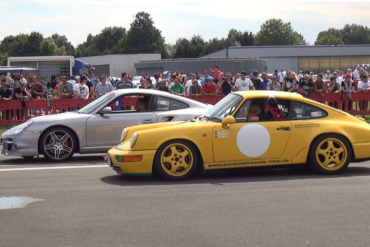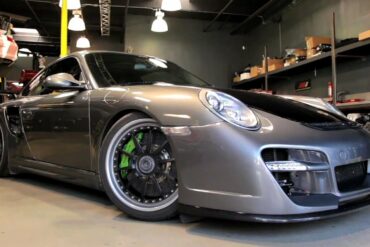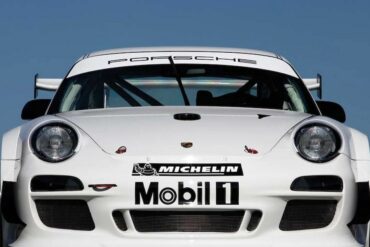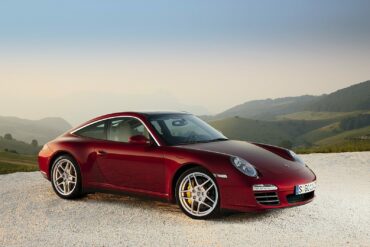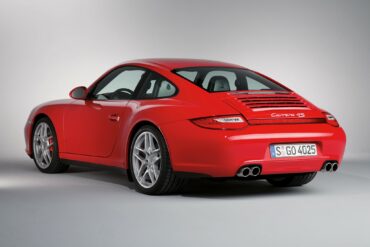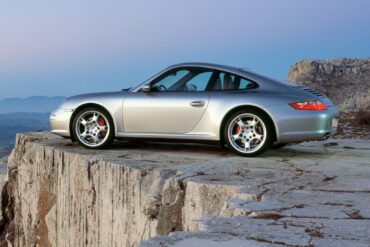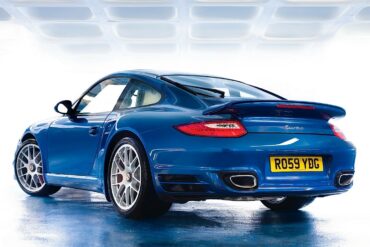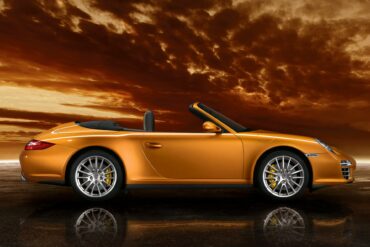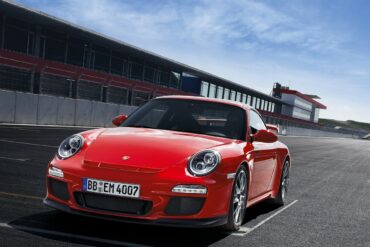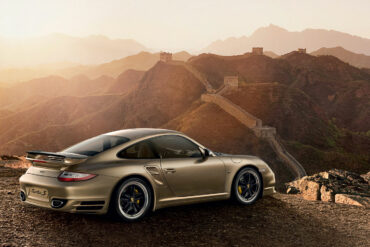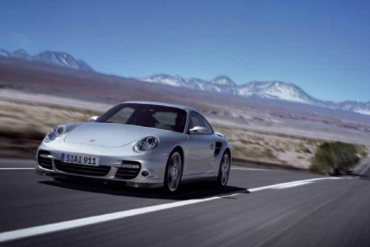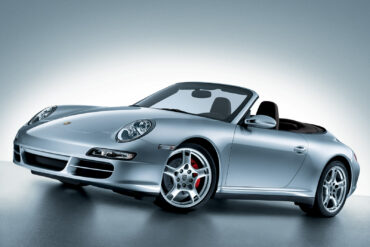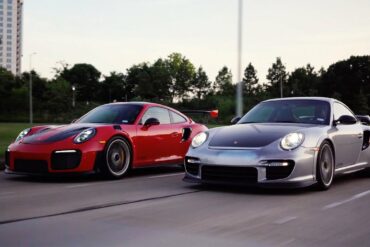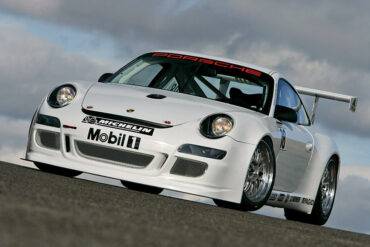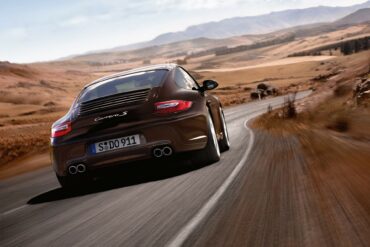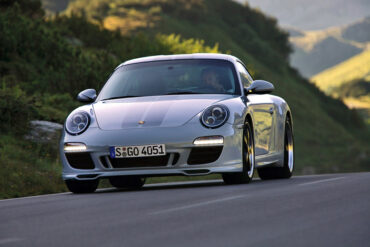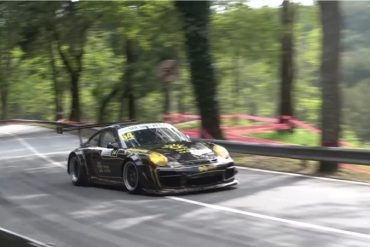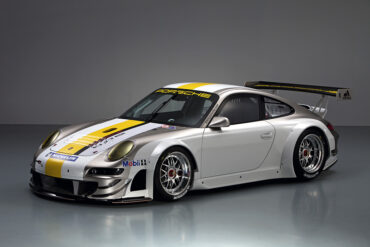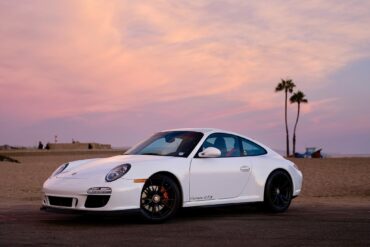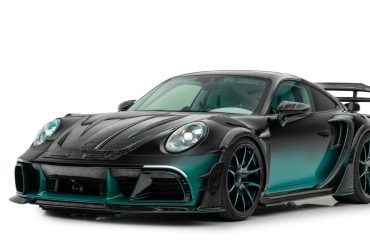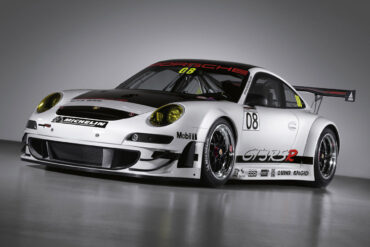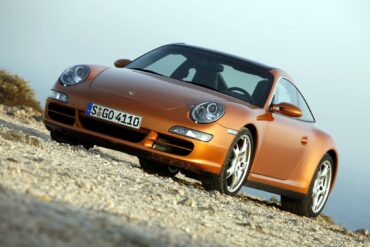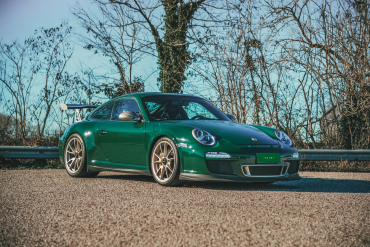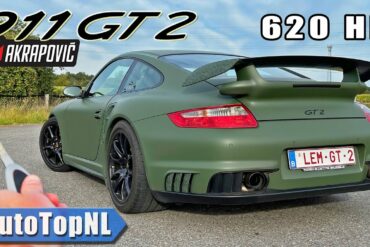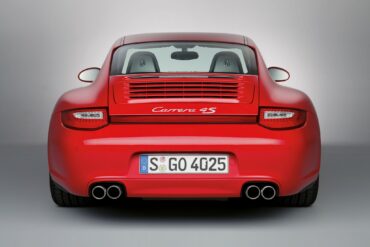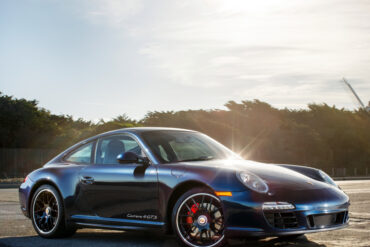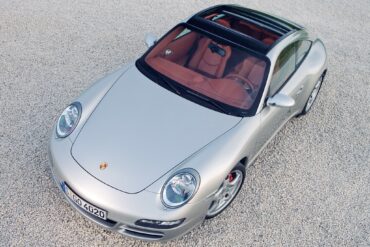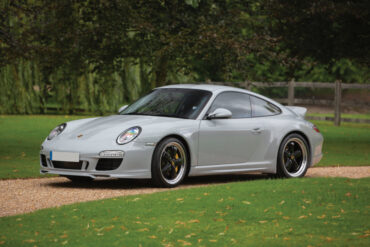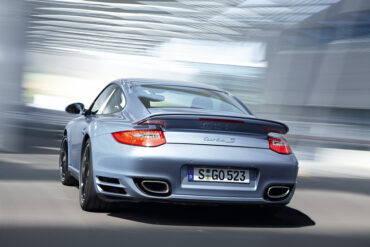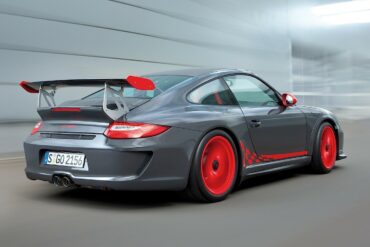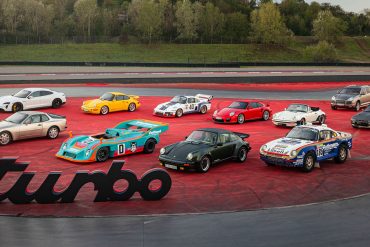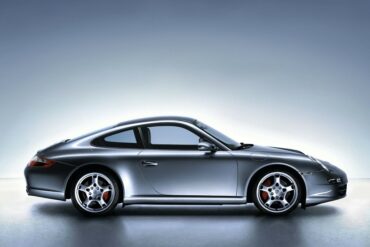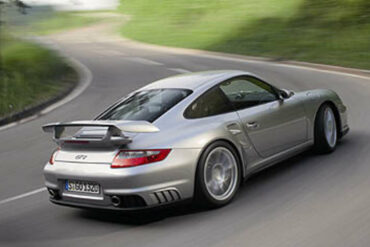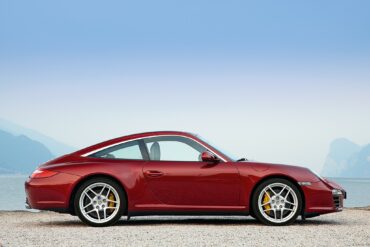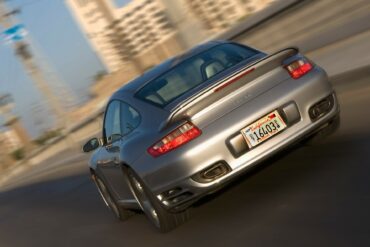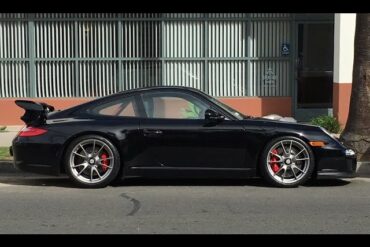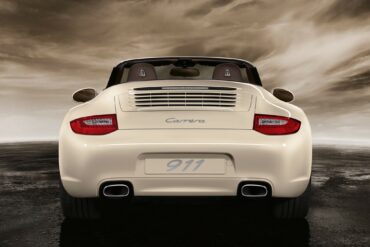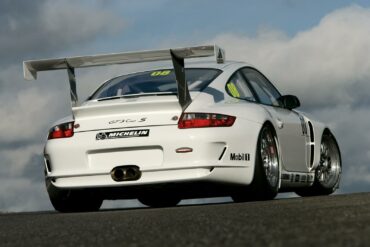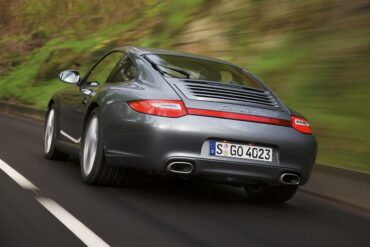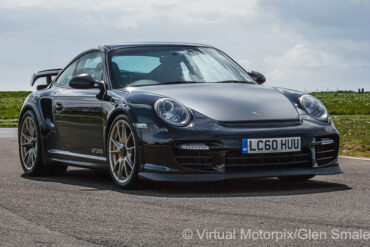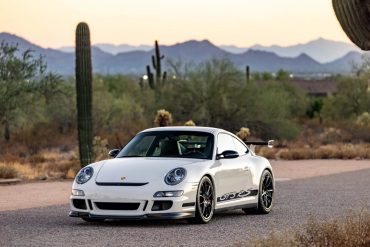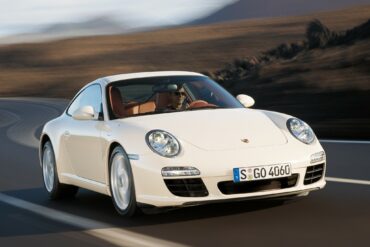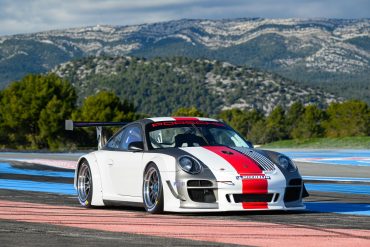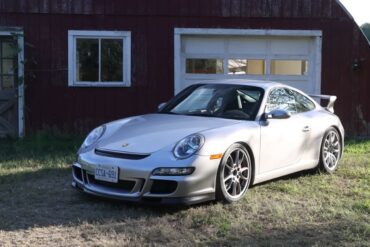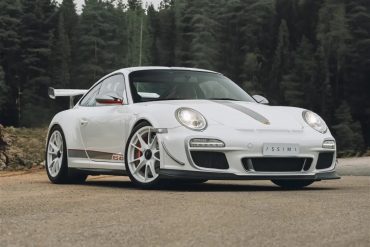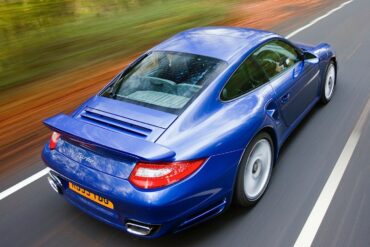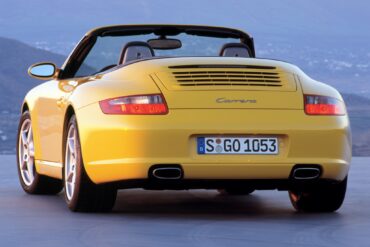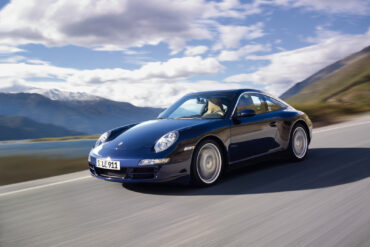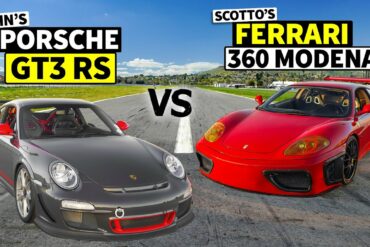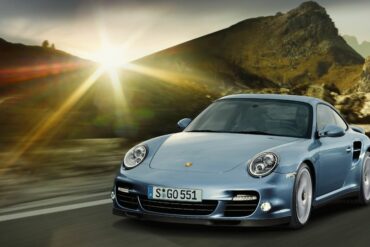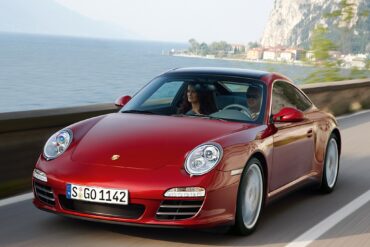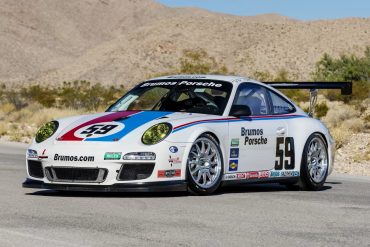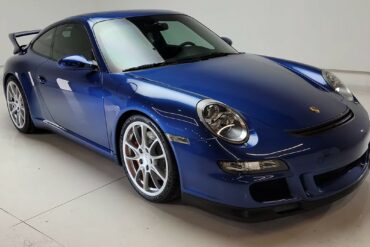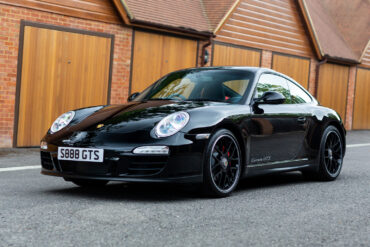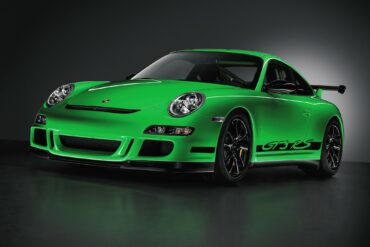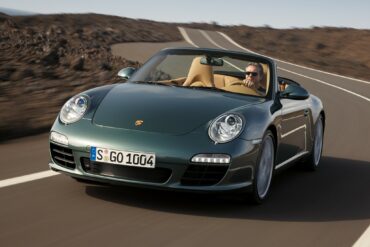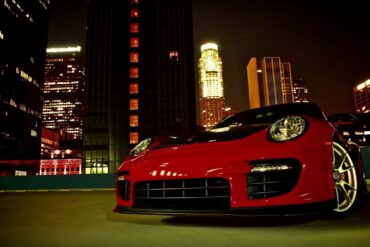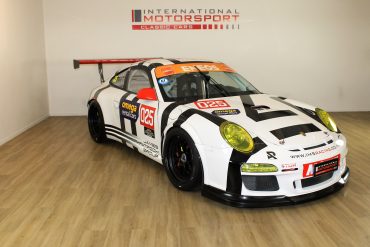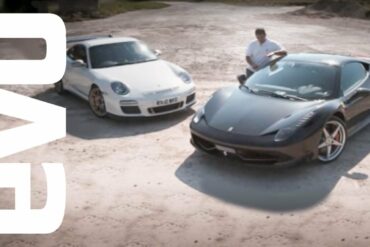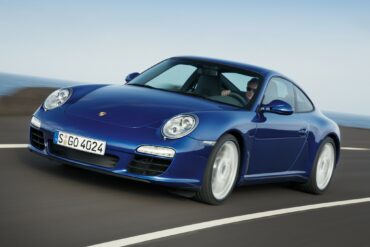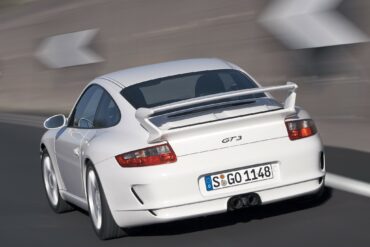2009 Porsche 911 Carrera 4 Cabriolet (997.2) Technical Specifications Engine Type Flat 6 Induction Normally-aspirated Cooling Water-cooled Valvetrain Double overhead camshafts Injection...
Porsche 911 (997)
On May 7, 2004, Porsche announced that the new 911 generation will come as a 2005 model, as a successor to the 996 model. The 997 ended up being the most commercially successful 911 of all time, selling over 200,000 units during its production run. It marked the return to the classic 911 styling after the 996’s “fried egg” look. Today many consider it the quintessential 911 design and the last of the pure 911 sports cars. Some 45 iterations of road cars in total were made but the 997’s significance should not be measured purely on its commercial success. This was a milestone car for successfully introducing the dual clutch PDK transmission to Porsche’s 911, and also Porsche’s now ubiquitous and ingenious active suspension management or ‘PASM’. The 997 represented a significant relaunch of the 911 that included a major body restyling and interior update, while using much of the rolling chassis of the outgoing 996. At launch there were two uprated versions of the water cooled Carrera engines – the Carrera 3.6 and the Carrera S 3.8. See all of our Porsche 997 Research.
This is the best 911 Porsche has ever made. The headline power figure and the ability to rev to 8,500 snare your attention, but the most staggering aspect of this engine is actually its tractability. Mid-range lunge is marvelous, even if the peak number of 339 pound-feet doesn't sound huge in the context of short gear ratios, lightweight, and a compact frontal area. In third gear, the way this thing flies between 4,500 and 8,500 rpm is scintillating. Plus, the utter progression of the delivery makes it vastly easier to take advantage of compared to the GT2's ridiculous turbo surge. This is one special car.
2011 Porsche 911 Turbo Cabriolet (997.2) Technical Specifications Engine Type Flat 6 Induction Twin-turbocharged Cooling Water-cooled Valvetrain Double overhead camshafts Injection Direct...
The Cabriolet version of the new Porsche 911 Carrera 4 GTS is just as potent as its coupe sibling. It combines a 408 hp 3.8-litre flat six engine with intelligent all-wheel drive that delivers a further exhilarating dimension to the dynamics of the iconic rear-engined sports car. The 911 was first offered with four-wheel drive in 1989 and the drivetrain has been a popular option ever since. Now, the 911 Carrera 4 GTS broadens customer choice in 2011, building on the success of the two-wheel drive Carrera GTS that went on sale in December last year. Carrera 4 GTS power unit is the 3.8-litre flat six with power kit.
Porsche Option Codes – Porsche 911 (2008 Model Year) Carrera/Carrera S/Carrera 4/Carrera 4S/GT3/Turbo/GT2, Coupé/Targa/Cabriolet Looking to decode your 2008 Porsche...
The 997.2 Turbo was introduced for the 2010 model year and received a new 3.8 litre engine capable of 493 horsepower, a significant evolution as compared to the 473hp in the 997.1 Turbo. The 997.2 Turbo was available in both manual and automatic transmissions, but the automatic evolved from the Tiptronic used in its predecessor, to a sportier dual-clutch PDK. Approximately 3,300 coupes were produced and 1,800 cabrios, far less than its predecessor. An epic all-around GT with more performance than you could ever need.
2009 Porsche 911 Carrera 4S Cabriolet (997.2) Technical Specifications Engine Type Flat 6 Induction Normally-aspirated Cooling Water-cooled Valvetrain Double overhead camshafts Injection...
2012 Porsche 911 Carrera 4 GTS Cabriolet (997) Technical Specifications Engine Type Flat 6 Induction Normally-aspirated Cooling Water-cooled Valvetrain Double overhead...
Porsche Option Codes – Porsche 911 (2009 Model Year) Carrera/Carrera S/Carrera 4/Carrera 4S, Coupé/Targa/Cabriolet Looking to decode your 2009 Porsche...
2013 Porsche 911 Turbo S (997) Technical Specifications Engine Type Flat 6 Induction Twin-turbocharged Cooling Water-cooled Valvetrain Double overhead camshafts Injection...
Porsche 911 997 Turbo Video Review I think the “997” Porsche 911 Turbo is an amazing bargain, with some models...
2008 Porsche 911 GT3 RSR (997) Technical Specifications Type Racing Car Built at Weissach, Germany Engine Aluminum Water-Cooled Boxer-6 w/Dry...
The 997 Carrera 4 was the all-wheel-drive version of the standard 997 Carrera and it arrived as a 2006 model year car (along with the 4S models). The 997.1 Carrera 4 had a3.6 L Watercooled Flat 6 (M96/05) engine that was good for 321 bhp @ 6800 rpm and 273 ft lbs @ 4250 rpm. It had a sub 5 second 0 - 60 mph hour time and a top speed of 174 mph. The transmission (six-speed manual or five-speed Tiptronic) feeds a forward propshaft that mates to a viscous coupling unit with a front differential.
2012 Porsche 911 Carrera 4 GTS Coupe (997) Technical Specifications Engine Type Flat 6 Induction Normally-aspirated Cooling Water-cooled Valvetrain Double overhead...
2006 – 2009 Porsche 911 GT3 & GT3 RS (997.1) Service Schedule This maintenance service schedule checklist is ONLY for...
2010 Porsche 911 Carrera 4 Coupe (997.2) Technical Specifications Engine Type Flat 6 Induction Normally-aspirated Cooling Water-cooled Valvetrain Double overhead camshafts...
The 997.2 Turbo was introduced for the 2010 model year and received a new 3.8 litre engine capable of 493 horsepower, a significant evolution as compared to the 473hp in the 997.1 Turbo. The 997.2 Turbo was available in both manual and automatic transmissions, but the automatic evolved from the Tiptronic used in its predecessor, to a sportier dual-clutch PDK. Approximately 3,300 coupes were produced and 1,800 cabrios, far less than its predecessor. An epic all-around GT with more performance than you could ever need.
Porsche 997 GT3 RS Chasing A GT3 On Public Roads I’m proud to bring on my channel the best Porsche...
GT3 RS 4.0 RS Ride & Review Our first video with Henry at Lakeside Classics and what a way to...
2006 Porsche 911 Carrera S Cabriolet (997) Technical Specifications Engine Type Flat 6 Induction Normally-aspirated Cooling Water-cooled Valvetrain Double overhead...
2012 Porsche 911 Carrera (997.2) Technical Specifications Engine Type Flat 6 Induction Normally-aspirated Cooling Water-cooled Valvetrain Double overhead camshafts Injection Direct...
2010 Porsche 911 Targa 4 (997.2) Technical Specifications Engine Type Flat 6 Induction Normally-aspirated Cooling Water-cooled Valvetrain Double overhead camshafts Injection...
RPM Technik CSR Full Review We placed our hands on a car that we’ve heard a lot about; the Porsche...
The 997 Porsche Turbo Is A Used Car Bargain We test the 997 generation Porsche Turbo with an APR tune....
Porsche 997 GTS Review Today, the 997 GTS is revered as one of the high water marks of the 911’s...
Overview The GT3s are the low volume 911s, road-going production cars homologated for what was Group 3 competition. The original...
Extreme perfectly characterizes the 2011 Porsche 911 GT2 RS. Incredibly fast with a factory-rated top speed of 209 MPH, this...
Should You Buy a Porsche 911 997...
2006 Porsche 911 Carrera S Coupe (997) Technical Specifications Engine Type Flat 6 Induction Normally-aspirated Cooling Water-cooled Valvetrain Double overhead...
19Bozzy92, our favorite YouTuber, has caught an absolute stunner this time around, across two videos. The stunner in question is...
2012 Porsche 911 Carrera GTS Coupe (997) Technical Specifications Engine Type Flat 6 Induction Normally-aspirated Cooling Water-cooled Valvetrain Double overhead camshafts...
Pure Driving In A Sweet Porsche 997 Carrera S We stumbled on a new Youtube channel recently and really love...
Inspired by the 918 Spyder, Porsche introduced the 911 Turbo S Edition 918 Spyder that was mechanically identical to the...
Porsche Option Codes – Porsche 911 (2007 Model Year) Looking to decode your 2007 Porsche 911 option codes? Want to...
In the case of the 911 Carrera 4S Cabriolet that begins with a larger, more potent six-cylinder engine. The Carrera 4S is powered by a 3.8-liter flat six that produces 355 horsepower and 295 lb.-ft. of torque. The roughly ten percent increase in power translates to improved acceleration and higher top track speed. The 911 Carrera 4S Cabriolet with the six-speed manual gearbox races from a stop to 60 mph in only 4.7 seconds, topping out at the track at 185 mph. When carrying the optional Tiptronic S transmission, the zero to 60 mph sprint takes a mere 4.5 seconds.
Quarter mile drag race between the air-cooled Porsche 964 RS versus a 911 Turbo from the 997-generation....
Tuned Porsche 997 Turbo S Review TUNED visits BBi Autosport in Huntington Beach, CA to drive their new Porsche 997...
2011 Porsche 911 GT3 R (997) Technical Specifications Type Racing Car Released at 2010 Autosport International Built at Weissach, Germany Engine...
The 911 Targa received the same upgrades during the switchover to the 997.2 generation, including a boost in power and...
2012 Porsche 911 Carrera 4S Coupe (997.2) Technical Specifications Engine Type Flat 6 Induction Normally-aspirated Cooling Water-cooled Valvetrain Double overhead camshafts Injection...
2007 Porsche 911 Carrera 4S Coupe (997) Technical Specifications Engine Type Flat 6 Induction Normally-aspirated Cooling Water-cooled Valvetrain Double overhead...
2011 Porsche 911 Turbo (997.2) Technical Specifications Engine Type Flat 6 Induction Twin-turbocharged Cooling Water-cooled Valvetrain Double overhead camshafts Injection Direct Fuel...
2010 Porsche 911 Carrera 4 Cabriolet (997.2) Technical Specifications Engine Type Flat 6 Induction Normally-aspirated Cooling Water-cooled Valvetrain Double overhead camshafts Injection...
2012 Porsche 911 GT3 (997.2) Technical Specifications Engine Type Flat 6 Induction Normally-aspirated Cooling Water-cooled Valvetrain Double overhead camshafts Injection Port...
In 2011, Porsche China released a special limited edition model to celebrate an active decade in the Chinese market. The Porsche 10 Year Anniversary Edition is yet another 911 of only ten copies, each with a stylish plaque with the chassis number. The Porsche has a Gold Bronze Metallic paint, combined with matte black carbon components such as the hood, rear wing, tailgate and side mirrors. Underneath, you will spot a 911 Turbo S. The interior is a combination of black with gold stitching leather, alcantara and carbon.
Porsche 911 Sales Brochures (Type 997) We found quite a few Porsche sales brochures for the Type 997 911 generation....
The 997 Porsche Turbo – What You Need To Know Before Buying One Your ultimate buying guide for the Porsche...
While the 997 Carrera 4S coupe sold a healthy 15,056 units between 2006 and 2008, the equally exciting Carrera 4S Cabriolet sold 12,587 units, making it a pretty popular 997 model. The reason is pretty simple. It had a gorgeous wide-body stance, all-wheel drive traction and that potent 3.8 L Flat 6 that was good for 350 bhp and 295 ft lbs of torque. The first convertible 911 that was as good a performer as it coupe siblings with the added benefit of open top driving in the summer with the comfort of being a great daily driver all year round.
Porsche 997 GT2 RS versus 991 GT2 RS Porsche’s 991 GT2 RS remains the most powerful and fastest 911 ever...
997 Carrera Depreciation and Buying Guide Buying a Porsche 911 997? Then this is the video to watch. In this...
The Porsche 997 GT3 Cup was a series of race cars created by Porsche to enter the Fédération Internationale de l’Automobile (FIA) Group GT3 racing class. Replacing the 996 GT3 Cup, the 997 Cup's 3.6 litre engine is rated at 294 kW (400 PS; 394 hp) and was mated to a six-speed sequential transmission. In 2009, the GT3 Cup received several 997.2 updates including a new 3.8 litre engine with an output of 331 kW (450 PS; 444 hp).
Everybody knows we are huge fans of the Porsche 997, but if you were shopping for one today, which one...
2009 Porsche 911 Carrera S Coupe (997.2) Technical Specifications Engine Type Flat 6 Induction Normally-aspirated Cooling Water-cooled Valvetrain Double overhead camshafts...
The 997 Sport Classic is a limited edition version of the 997.2 Carrera S coupé inspired by the 1973 Carrera RS 2.7. The engine is rated at 413 PS (304 kW; 407 hp) and features a newly developed resonance intake manifold with 6 vacuum-controlled switching flaps. It includes a 6-speed manual transmission, double-dome roof (informally called double bubble roof), 44 mm (1.7 in) wider rear fenders, SportDesign front apron with a front spoiler and a fixed 'duck tail' rear wing. Only 256 were made.
The Sound of Hillclimb Happiness Rampa da Falperra specialist José Silvino Pires took his beautiful Porsche 997 GT3-R once again...
2011 Porsche 911 GT3 RSR (997) Technical Specifications Engine B6 w/Dry Sump Lubrication, 29.5 mm Air Restrictors Position Rear, Longitudinal...
With a power output of 408 hp, outstanding vehicle dynamics and emphatically sporty equipment, the 997.2 Carrera GTS ascends to...
For almost 50 years, the Porsche 911 Turbo as a classic Coupé (and for more than 20 years in the...
2009 Porsche 911 GT3 RSR (997) Technical Specifications engine B6 w/Dry Sump Lubrication, 29.5 mm Air Restrictors position Rear, Longitudinal...
2007 Porsche 911 Targa 4S (997) Technical Specifications Engine Type Flat 6 Induction Normally-aspirated Cooling Water-cooled Valvetrain Double overhead camshafts Injection...
Based on the already primal 997.2 GT3, the RS gets another 15 hp from the 3.8-liter flat-six for a total...
200 mph Autobahn Drive In a Porsche 911 GT2...
2009 Porsche 911 Carrera 4S Coupe (997.2) Technical Specifications Engine Type Flat 6 Induction Normally-aspirated Cooling Water-cooled Valvetrain Double overhead camshafts Injection...
2011 Porsche 911 Carrera 4 GTS Coupe (997) Technical Specifications Engine Type Flat 6 Induction Normally-aspirated Cooling Water-cooled Valvetrain Double overhead...
2008 Porsche 911 Targa 4S (997) Technical Specifications Engine Type Flat 6 Induction Normally-aspirated Cooling Water-cooled Valvetrain Double overhead camshafts Injection...
2010 Porsche 911 Sport Classic (997) Technical Specifications Engine Type Flat 6 Induction Normally-aspirated Cooling Water-cooled Valvetrain Double overhead camshafts Injection Direct...
2012 Porsche 911 Turbo S (997) Technical Specifications Engine Type Flat 6 Induction Twin-turbocharged Cooling Water-cooled Valvetrain Double overhead camshafts Injection...
2010 Porsche 911 GT3 RS (997.2) Technical Specifications Engine Type Flat 6 Induction Normally-aspirated Cooling Water-cooled Valvetrain Double overhead camshafts Injection...
A visit to Porsche at the Retro Classics in Stuttgart is always a journey through time. This year, the sports...
2005 Porsche 911 Carrera S Coupe (997) Technical Specifications Engine Type Flat 6 Induction Normally-aspirated Cooling Water-cooled Valvetrain Double overhead...
The 997 GT2 RS Is the Fastest Stick-Shift Production Porsche Ever Chris Harris drives the all new 911 GT2....
2010 Porsche 911 Targa 4S (997.2) Technical Specifications Engine Type Flat 6 Induction Normally-aspirated Cooling Water-cooled Valvetrain Double overhead camshafts Injection Direct...
2009 Porsche 911 Turbo (997) Technical Specifications Engine Type Flat 6 Induction Twin-turbocharged Cooling Water-cooled Valvetrain Double overhead camshafts Injection Port...
Porsche 997.2 GT3 Mountain Run The Porsche 997.2 GT3 featured several significant improvements over the 997.1 which preceded it. Center...
2011 Porsche 911 Carrera Cabriolet (997.2) Technical Specifications Engine Type Flat 6 Induction Normally-aspirated Cooling Water-cooled Valvetrain Double overhead camshafts...
997 Carrera Cup Champions & Results The 997 GT3 Cup was introduced in January 2005 for the upcoming racing season....
Porsche 911 (997.2) Carrera, Carrera S, Carrera 4, Carrera 4S Service Schedule This maintenance service schedule checklist is ONLY for...
2010 Porsche 911 GT2 RS (Type 997), Llandow Circuit, Cardiff, Wales, UK (2014) The GT2 has been Porsche’s top performing...
The 996-generation GT3 RS wasn’t available in the U.S., but that changed with the 997-generation. The standard 997 GT3 made...
Porsche refers to it as a new generation, even though the internal chassis code 997 remains unchanged. The 997.2 therefore is more of a mid-term facelift with some significant technological changes. Notably, the water-cooled flat-six engines get direct-injection technology, and a seven-speed, dual-clutch transmission replaces the previous five-speed Tiptronic automatic while the shift-it-yourself option remains a six-speed. Base Carrera coupe gets 339 bhp and 287 ft lbs and a 0.3 second faster 0 - 60 mph time of 4.5 seconds. Top speed now 179 mph. A nice update indeed.
The race-ready 911 GT3 R, developed by German sports car manufacturer Porsche in accordance with FIA GT3 regulations, made its...
Know more about this very interesting Porsche 997 which has been swapped with a Honda K20 engine....
The 997-generation 911 GT3 RS 4.0 from Porsche represents the outcome of extensive testing on both open roads and in...
2010 Porsche 911 Turbo (997.2) Technical Specifications Engine Type Flat 6 Induction Twin-turbocharged Cooling Water-cooled Valvetrain Double overhead camshafts Injection Direct Fuel...
2006 Porsche 911 Carrera Cabriolet (997) Technical Specifications Engine Type Flat 6 Induction Normally-aspirated Cooling Water-cooled Valvetrain Double overhead camshafts...
The two 997 Targa 4 cars are both offered in only all-wheel-drive. Available with either a 3.6 litre flat 6 in the Targa 4, or with a more powerful 3.8 litre flat 6 in the Targa 4S, the new car offers almost all the fun of a convertible without sacrificing the dynamic abilities of a hardtop. The Targa 4S gets to 60 mph in 4.7 seconds and tops out at 179 mph thanks to its 3.8 liter flat six pumping out 350 bhp and 295 ft lbs of torque. It has softer spring rates than the coupe, a more generous helping of leather in the cabin, a better tally of standard equipment, more storage space behind the front seats.
In their newest episode of THIS vs THAT, Hoonigan attempts to drag race a 1999 Ferrari 360 Modena against a...
Porsche Option Codes – Porsche 911 (2011 Model Year) Looking to decode your 2011 Porsche 911 option codes? Want to...
As with the previous 996 Targa model, the most striking feature of the car is the large, sliding-glass roof and glass rear hatch, which blend sleekly into the classic 911 lines while providing the Targa with its own unique personality. Like the rest of the range the Targa 4S got a visual refresh and the all-new direct injection engine. In the Targa 4S, it produced 380 bhp @ 6500 rpm and torque of 310 ft lbs @ 4400 rpm. 0 - 60 mph takes just 4.5 seconds (PDK) and top speed is 185 mph.
Brumos Racing, champions of the 2011 Rolex Grand-Am GT Championship, achieved victory using a Porsche 911 GT3 Cup car driven...
Watch this Cobalt Blue Porsche 997 GT3 get the love and care it deserves as it is given some interior...
Porsche Option Codes – Porsche 911 (2012 Model Year) Looking to decode your 2012 Porsche 911 option codes? Want to...
2008 Porsche 911 GT3 RS (997) Technical Specifications Engine Type Flat 6 Induction Normally-aspirated Cooling Water-cooled Valvetrain Double overhead camshafts...
Like the rest of the range the Carrera S Cabriolet got a new 997.2 generation update. Not much is new on the outside, but the design refresh did give it a revised front bumper and larger air intakes, as well as by new large mirrors and the bright strip of LEDs below the headlights that serve as daytime running lights. Inside the car, there's a new communication management system, PCM 3.0 which includes a new touchscreen feature, is standard on all 2009 and onward 911s.
Porsche 911 GT2 RS Top Gear Review The team takes the Porsche 911 GT2 RS around the closed streets of...
2009 Porsche 911 GT3 Cup (997) Technical Specifications Engine Boxer-6 w/Dry Sump Lubrication Fuel Feed Multi-point, Sequential Injection Bore 76.4 mm /...
Last Drive Before Hibernation English winters and Michelin Pilot Sport Cup tires don’t mix, so I’m taking one last drive...
For the 997.2 generation, power from the 3.6-liter Carrera engine was increased to 345 hp while the Carrera S saw 385 horsepower from its 3.8-liter flat-six. Power was sent to the rear wheels via a standard manual box but for the first time, the 997.2 saw the introduction of the dual-clutch PDK as an option. The chassis remains largely unchanged, with slightly modified springs and dampers. The sports suspension is replaced with a variable, electronically controlled sports suspension based on the active PASM suspension. The sweet spot in the used car market at the moment.
2007 Porsche 911 GT3 (997) Technical Specifications Engine Type Flat 6 Induction Normally-aspirated Cooling Water-cooled Valvetrain Double overhead camshafts Injection Port...


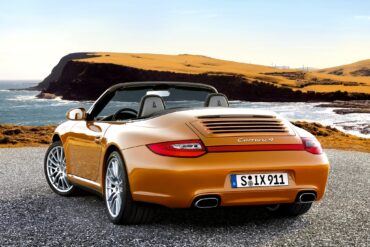
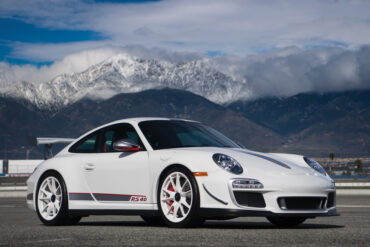
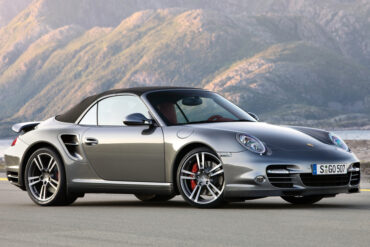
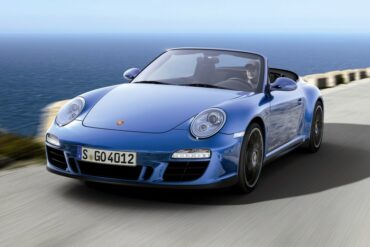
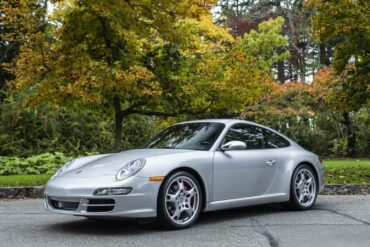
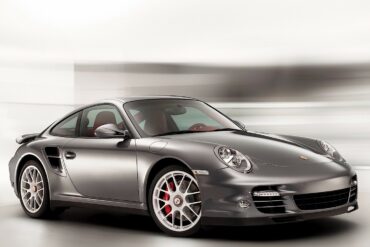
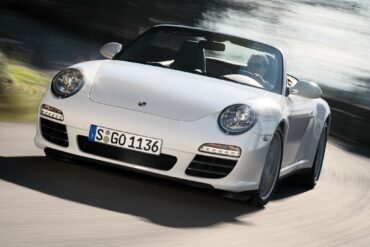
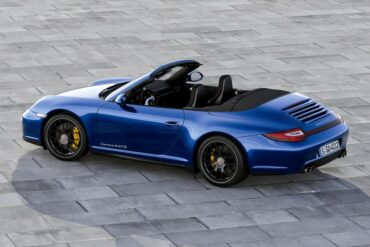
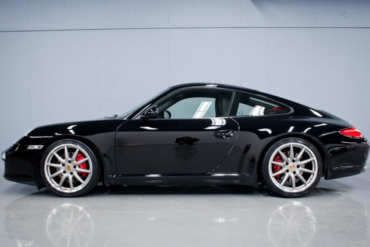
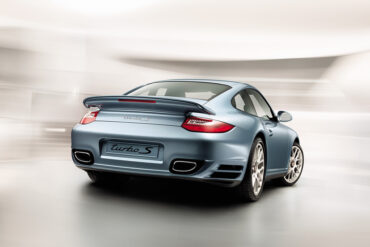
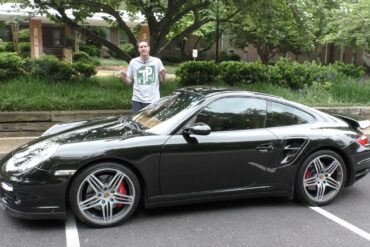
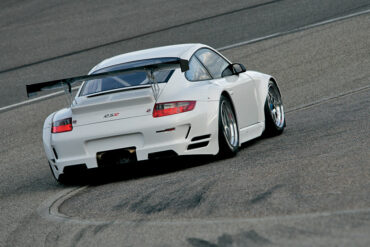
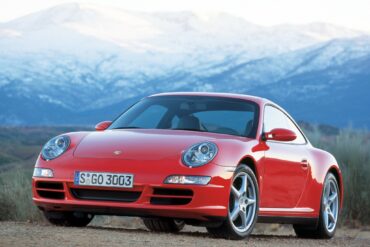
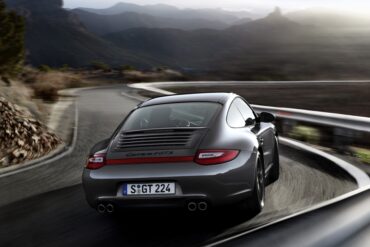
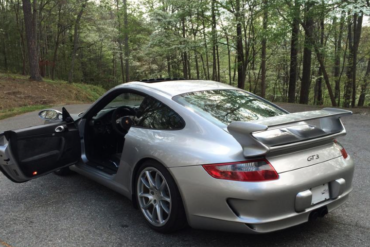
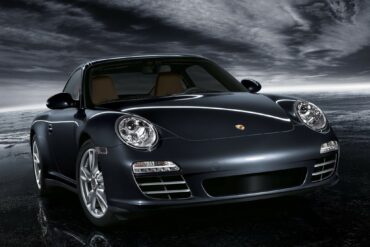
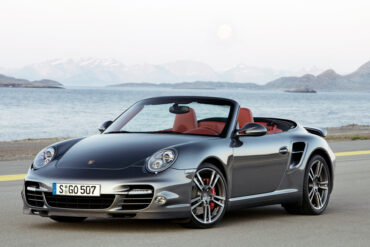
![Porsche 997 GT3 RS - ORGASMIC SOUND [CHASING PORSCHE 996 GT3] RAW POV](https://www.stuttcars.com/wp-content/uploads/2018/06/Porsche-997-GT3-RS-ORGASMIC-SOUND-CHASING-PORSCHE-996-GT3-RAW-POV--370x247.jpeg)
